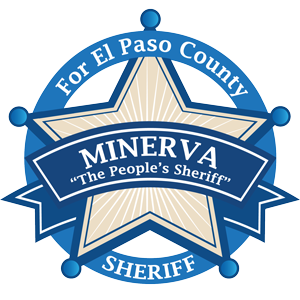Introduction
El Paso, Texas, is a city characterized by its unique demographic makeup and vibrant community. Understanding the voting demographics, trends, and turnout in El Paso is crucial for grasping the city’s political landscape and predicting future election outcomes. This blog explores these aspects in detail, providing insights into how various factors influence voter behavior in El Paso.
Demographics of El Paso Voters
- Ethnic Composition:
- El Paso has a predominantly Hispanic population, with about 82% of residents identifying as Hispanic or Latino, according to the U.S. Census Bureau. This demographic significantly influences the city’s cultural and political dynamics (Minerva for Sheriff) (Minerva for Sheriff).
- The remaining population comprises primarily non-Hispanic whites, African Americans, and a smaller percentage of Asian Americans and other ethnic groups (Minerva for Sheriff).
- Age Distribution:
- El Paso’s population is relatively young, with a median age of approximately 32 years. The city’s age distribution impacts voter turnout and preferences, with younger voters typically showing different political inclinations compared to older generations (Minerva for Sheriff) (Minerva for Sheriff).
- Efforts to engage young voters are crucial for mobilizing this significant segment of the electorate(Minerva for Sheriff).
- Economic Status:
- Economic factors also play a role in shaping voter behavior. El Paso has a higher-than-average poverty rate, which can affect voter turnout and priorities. Economic issues such as job creation, healthcare, and education are often at the forefront of local elections (Minerva for Sheriff) (Minerva for Sheriff).
Trends in Voter Turnout
- Historical Turnout Rates:
- Voter turnout in El Paso has varied over the years, with presidential elections typically seeing higher participation compared to midterm and local elections. For instance, the 2020 presidential election saw a significant increase in voter turnout nationwide, including in El Paso (Minerva for Sheriff) (Minerva for Sheriff).
- Local elections, however, often suffer from lower turnout, highlighting the need for increased voter engagement and education about the importance of participating in all levels of elections (Minerva for Sheriff).
- Impact of Voter Mobilization Efforts:
- Various organizations and community groups in El Paso have made concerted efforts to increase voter registration and turnout. Initiatives such as voter registration drives, educational campaigns, and transportation services to polling stations have contributed to higher voter participation (Minerva for Sheriff) (Minerva for Sheriff).
- These efforts are particularly focused on underrepresented communities, including young voters, minorities, and economically disadvantaged individuals (Minerva for Sheriff).
- Mail-In and Early Voting:
- The availability and utilization of mail-in and early voting options have also impacted voter turnout in El Paso. These methods provide greater accessibility and convenience, encouraging more residents to participate in elections (Minerva for Sheriff) (Minerva for Sheriff).
- In the 2020 election, a significant number of El Pasoans took advantage of early voting, reflecting a trend seen across the country (Minerva for Sheriff).
Key Issues Influencing Voters
- Economic Concerns:
- Economic issues are a major concern for many El Paso voters. Topics such as job creation, minimum wage, affordable housing, and economic development are frequently at the top of the agenda during local elections (Minerva for Sheriff) (Minerva for Sheriff).
- Policies aimed at reducing poverty and improving economic opportunities resonate strongly with the electorate, particularly in lower-income areas (Minerva for Sheriff).
- Healthcare:
- Access to healthcare is another critical issue for El Paso voters. With a significant portion of the population being uninsured or underinsured, healthcare policies that address affordability and accessibility are highly prioritized by the community (Minerva for Sheriff) (Minerva for Sheriff).
- Recent debates around healthcare reform have heightened awareness and concern about this issue among voters (Minerva for Sheriff).
- Education:
- Education remains a pivotal issue, with voters concerned about the quality of local schools, funding, and educational opportunities for their children. Policies that focus on improving public education and increasing resources for schools are crucial for gaining voter support in El Paso (Minerva for Sheriff)(Minerva for Sheriff).
- The impact of COVID-19 on education has also brought new challenges and discussions about remote learning, safety protocols, and support for students and teachers (Minerva for Sheriff).
- Immigration:
- Given El Paso’s location on the U.S.-Mexico border, immigration is a central issue for many voters. Policies related to border security, immigration reform, and the treatment of immigrants directly affect the lives of residents and are key topics in local and national elections (Minerva for Sheriff) (Minerva for Sheriff).
- The community’s diverse and often bilingual nature adds complexity to the discussions around immigration policies and their implementation (Minerva for Sheriff).
Political Landscape and Party Affiliations
- Democratic Dominance:
- El Paso has traditionally leaned Democratic, with the majority of voters supporting Democratic candidates in local, state, and national elections. This trend reflects the city’s demographic composition and the alignment of Democratic policies with the concerns of many residents (Minerva for Sheriff) (Minerva for Sheriff).
- However, there are also active Republican and independent voters, contributing to a dynamic political landscape (Minerva for Sheriff).
- Local Political Figures:
- Prominent local politicians, such as Beto O’Rourke, have gained national attention and brought issues specific to El Paso into the broader political discourse. These figures often influence voter turnout and engagement through their platforms and advocacy efforts (Minerva for Sheriff) (Minerva for Sheriff).
Conclusion
Understanding the demographics, trends, and turnout of El Paso voters provides valuable insights into the city’s political landscape. By recognizing the key issues that influence voter behavior and the efforts made to increase participation, we can appreciate the importance of fostering an informed and engaged electorate. The diverse and dynamic nature of El Paso’s voter base underscores the need for policies that address the unique needs and concerns of its residents.
For more information on El Paso’s voting trends and demographics, visit Minerva4Sheriff.com.





Leave a Reply